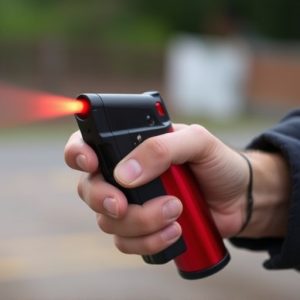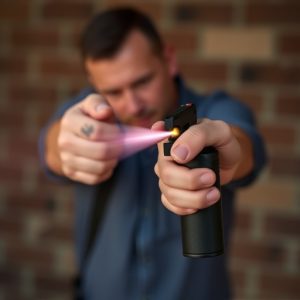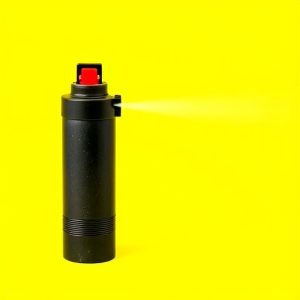Guiding Civilian Use of Pepper Spray: Legal, Effective, & Safe Deployment
To legally carry pepper spray, understand jurisdiction-specific laws, obtain necessary permits, comp…….
To legally carry pepper spray, understand jurisdiction-specific laws, obtain necessary permits, complete training, and meet age criteria. Regulations vary by location, affecting permit requirements, open carry options, and deployment rules. Proper training ensures safe handling and strategic deployment in last-resort scenarios against imminent threats. Always check local legal frameworks and consult with authorities to avoid fines or confiscation while empowering yourself for personal safety.
In today’s world, personal safety is a paramount concern. One effective tool gaining popularity for civilian protection is inflammatory spray, also known as pepper spray. This non-lethal self-defense mechanism offers individuals a means of deterring potential threats while adhering to legal guidelines. Understanding the nuances of pepper spray ownership and usage is crucial, especially when navigating diverse regulations on how to legally carry pepper spray. This article explores these aspects, providing insights into types, deployment strategies, and safety considerations for responsible use.
- Understanding Pepper Spray: A Non-Lethal Self-Defense Tool
- Legal Frameworks: Navigating Regulations for Civilian Ownership
- Types of Pepper Spray and Their Effectiveness
- Safety and Training Considerations for Responsible Use
- When and How to Deploy Pepper Spray for Maximum Impact
Understanding Pepper Spray: A Non-Lethal Self-Defense Tool
Pepper spray, also known as oleoresin capsicum (OC) spray, is a non-lethal self-defense tool that has gained immense popularity for civilian protection. It works by irritating the eyes and respiratory system of an assailant, temporarily disabling them while you escape to safety. Understanding how this powerful yet legal defense mechanism functions is crucial for those considering its use.
Learning how to legally carry pepper spray is an essential step in empowering yourself against potential threats. The laws surrounding pepper spray vary by jurisdiction, so it’s vital to research and comply with local regulations. In many places, individuals can legally own and carry pepper spray for self-defense purposes if they obtain the necessary permits and meet specific criteria, such as completing training or being over a certain age. Knowing these legal parameters ensures that you can protect yourself while adhering to the law.
Legal Frameworks: Navigating Regulations for Civilian Ownership
Navigating legal frameworks is a crucial step in understanding how to legally carry pepper spray as a civilian. The regulations surrounding pepper spray ownership and use vary significantly across different jurisdictions, making it essential for individuals to research and understand the laws specific to their location. In many countries, self-defense sprays, including pepper spray, are subject to strict controls due to their potential for misuse. Authorities often classify these sprays based on capsize, active ingredient concentration, and intended purpose—whether for law enforcement, personal defense, or other specialized uses.
To legally carry pepper spray, civilians must comply with local, state, or federal requirements. This may involve obtaining permits, registering the spray, or adhering to specific age restrictions. Some areas might permit individuals to possess small amounts of pepper spray for self-defense without a license but still demand they meet certain criteria, such as attending safety training courses. It’s vital to stay informed about these regulations, as non-compliance can lead to legal consequences, including fines or confiscation of the spray.
Types of Pepper Spray and Their Effectiveness
Pepper spray, a popular civilian protection tool, comes in various types, each with distinct features and effectiveness levels. The most common types include oleoresin capsicum (OC) spray, which is derived from chili peppers and known for its long-lasting irritant effect, causing temporary blindness, coughing, and difficulty breathing. Another type is the more potent pepper spray concentrate (PSC), offering a stronger punch but with shorter-lived effects. Additionally, there are specialized formulas designed for specific needs, such as those that are non-resin based, aiming to reduce potential environmental impact or skin irritation.
When considering how to legally carry pepper spray, it’s crucial to understand local regulations. Laws regarding the possession and carrying of pepper spray vary widely by jurisdiction. Some areas require permits or registration, while others permit open carry or concealment with specific restrictions. It is essential to check with your local law enforcement agency or legal advisor for detailed information on legal carrying requirements, ensuring compliance to avoid any legal repercussions.
Safety and Training Considerations for Responsible Use
When considering how to legally carry pepper spray for civilian protection, safety and training are paramount. It’s crucial to understand local laws regarding the possession and use of pepper spray, as regulations vary widely from region to region. Before purchasing or carrying any form of inflammatory spray, individuals should familiarize themselves with these legal constraints to ensure compliance and avoid potential consequences.
Training is another vital aspect that cannot be overlooked. Learning proper handling techniques, safe storage, and responsible deployment are essential elements in making informed decisions during stressful situations. Proper training enables users to effectively utilize pepper spray while minimizing the risk of injury to themselves or others. It also fosters a sense of responsibility, ensuring that individuals employ these tools only when necessary for self-defense or to protect others.
When and How to Deploy Pepper Spray for Maximum Impact
When it comes to civilian protection, knowing when and how to deploy pepper spray can significantly enhance your safety. The key is to use it as a last resort when faced with an imminent threat. Pepper spray is designed to temporarily incapacitate an attacker by irritating the eyes, nose, and respiratory system, giving you precious time to escape or seek help.
To maximize its impact, ensure proper training on how to legally carry and deploy pepper spray. Understand your local laws regarding self-defense and the use of force. Hold the spray at close range (around 2-3 feet) and aim for the face, targeting eyes, nose, and mouth. Release the trigger in short bursts, allowing the fog to spread before firing again. This technique increases the chances of disorienting your assailant effectively. Remember, responsible use and awareness of legal boundaries are paramount when considering any form of self-defense, including pepper spray.
Pepper spray is a valuable tool for civilian self-defense, offering a non-lethal way to deter and incapacitate potential attackers. By understanding the legal frameworks surrounding its ownership and deployment, individuals can ensure they use this tool responsibly and effectively. With various types available, each with unique effectiveness, proper training and safety considerations are paramount. Knowing when and how to deploy pepper spray can make all the difference in a potentially dangerous situation. Remember, legal restrictions vary, so it’s crucial to understand your local regulations on how to legally carry pepper spray.


